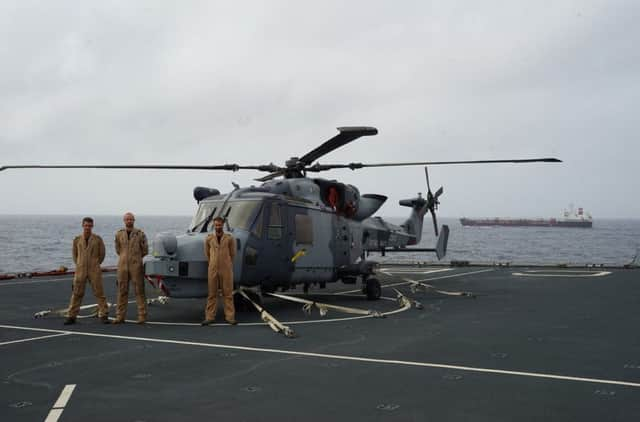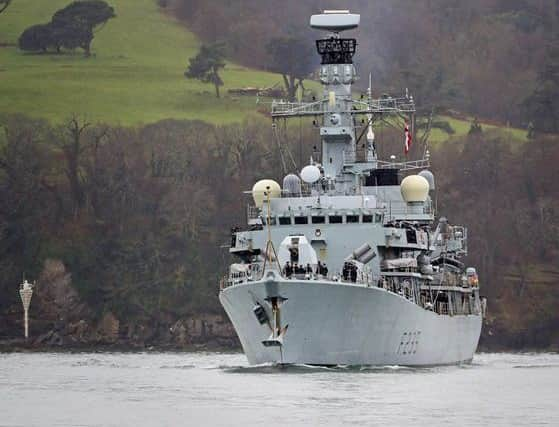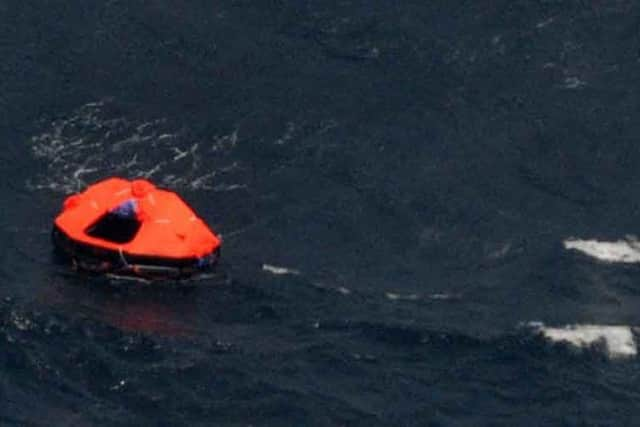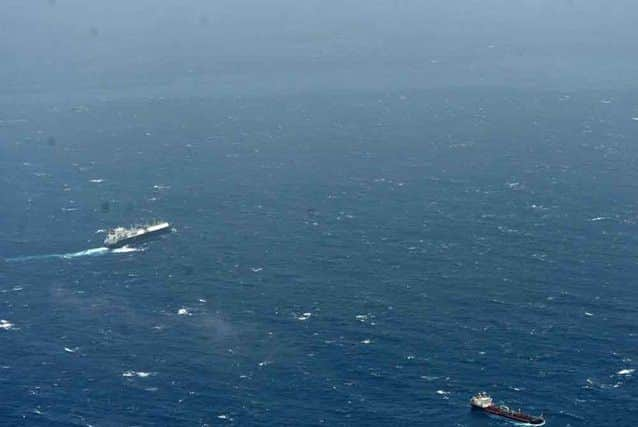Royal Navy air crew rescues last survivor of sunken tanker in the Indian Ocean


Royal Navy air engineering technician Stu Rogers was repeatedly swamped by waves as he spent half-an-hour trying to hook the stricken sailor and winch him up into HMS Monmouth’s Wildcat helicopter, 140 miles off the island of Socotra in the Gulf of Yemen.
The sailor was the 13th of 14 crew members of the tanker Rama 2, which put out a mayday call in the early hours of Monday as it was battered by heavy seas.
Advertisement
Hide AdAdvertisement
Hide AdA dozen crew members were picked up by merchant vessels which took part in the rescue effort, directed by British naval authorities in Bahrain.


But two men were reported to be in the water, prompting Plymouth-based HMS Monmouth to launch her new Wildcat helicopter Black Jack.
The helicopter was too far from the Rama 2’s last position to perform an immediate rescue, but refuelled on another British naval vessel patrolling in the region, RFA Cardigan Bay.
With the help of the merchant vessels and a long-range Japanese patrol aircraft to direct the helicopter, Black Jack arrived on the scene as darkness was falling on.
Advertisement
Hide AdAdvertisement
Hide AdA flare marked the location of one of the two crew still in the water, but the weather was said to be poor, fuel running low and light fading – meaning the rescue was on the limit of what the helicopter and its crew are allowed to safely operate in.


At times waves engulfed both winchman and survivor, exhausting both men, but at the last minute Mr Rogers connected the shipwrecked sailor to his winch wire and hauled him safely into the Wildcat.
Stu said: ‘It was a difficult sortie. We were close to the wire but it was great that we were able to get him on board.
‘A 30-minute attempt to get him hooked up was one of the hardest things I’ve had to do since joining the Fleet Air Arm.’
Advertisement
Hide AdAdvertisement
Hide AdDespite an extensive search, the missing 14th member of the crew was sadly not found. He is presumed dead.


The 13th survivor was examined by a medical officer and assessed to be fit and well, but ‘somewhat battered’.
It was estimated he had been in the water since the Rama 2 sank earlier in the day. None of the tanker’s crew had been able to get into life rafts because of the bad weather.
All survivors were reunited aboard the merchant vessel Tortola, which had rescued 10 of the crew, and taken to Salalah in Oman.
Advertisement
Hide AdAdvertisement
Hide AdLieutenant Si Hall RN, Wildcat Pilot said: ‘The efforts of the crew of the Japanese patrol aircraft and the assisting merchant vessels were particularly humbling and I have no doubt that it was the combined efforts that resulted in a successful rescue.’